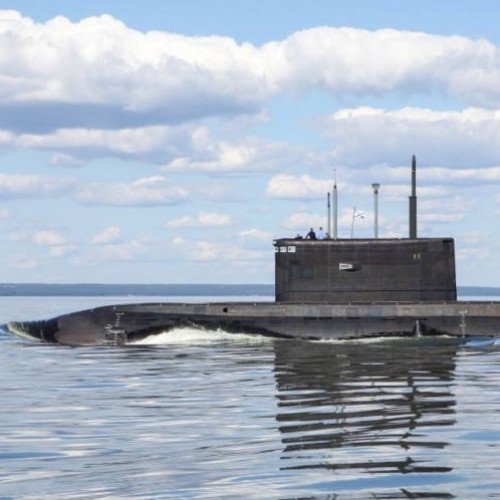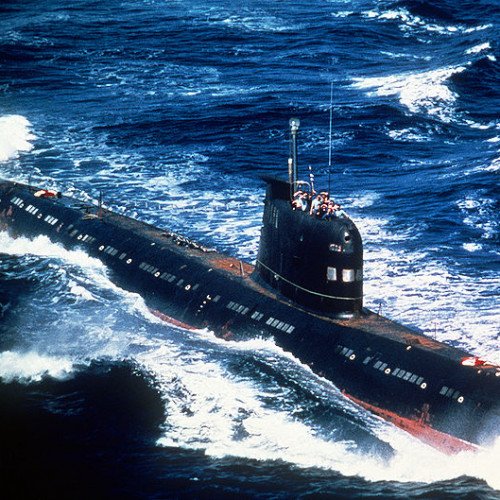Kilo-class submarine vs Foxtrot-class submarine

Kilo-class submarine
Kilo class, Soviet designation Project 877 Paltus (Russian: Па́лтус, meaning "halibut", NATO reporting name Kilo), is a class of diesel-electric attack submarines designed and built in the Soviet Union for the Soviet Navy. The class was built until the mid-1990s, when production was switched to the more advanced Project 636 Varshavyanka variant, also known as Improved Kilo-class by the West.
Statistics for this Xoptio

Foxtrot-class submarine
The Foxtrot class was the NATO reporting name of a class of diesel-electric patrol submarines that were built in the Soviet Union. The Soviet designation of this class was Project 641. The Foxtrot class was designed to replace the earlier Zulu class, which suffered from structural weaknesses and harmonic vibration problems that limited its operational depth and submerged speed. The first Foxtrot keel was laid down in 1957 and commissioned in 1958 and the last was completed in 1983. A total of 58 were built for the Soviet Navy at the Sudomekh division of the Admiralty Shipyard (now Admiralty Wharves), Saint Petersburg. Additional hulls were built for other countries. The Foxtrot class was comparable in performance and armament to most contemporary designs. However, its three screws made it noisier than most Western designs. Moreover, the Foxtrot class was one of the last designs introduced before the adoption of the teardrop hull, which offered much better underwater performance. Also, although the Foxtrot was larger than a Zulu class submarine, the Foxtrot class had 2 of its 3 decks dedicated to batteries. This gave it an underwater endurance of 10 days, but the weight of the batteries made the Foxtrot's average speed a slow 2 knots at its maximum submerged time capability. Due to the batteries taking up 2 decks, onboard conditions were crowded, with space being relatively small even when compared to older submarines such as the much older American Balao-class submarine. The Foxtrot class was completely obsolete by the time the last submarine was launched. The Russian Navy retired its last Foxtrots between 1995 and 2000; units were scrapped and disposed of for museum purposes. During the division of the Soviet Black Sea Fleet, in 1997 one Foxtrot class submarine (later renamed as Zaporizhzhia) was passed to Ukraine as it was not operational since 1991. The ship never effectively served in the Ukrainian Navy and was under repair. In 2005 Ukrainian Ministry of Defence wanted to sell it, but was unsuccessful. Following successful post-repair trials in June 2013, it was recognised as operational. However, on 22 March 2014 it was surrendered to or captured by Russia as part of the Russian annexation of Crimea. Russia decided not to accept it due to its age and operational unsuitability. Its subsequent status is unknown.